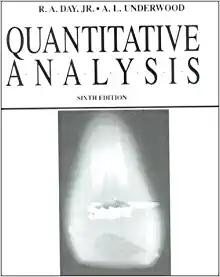General information about acid base titration
Acid-base titrations are based on the neutralization reaction. They are sometimes called alkalimetric titrations and general name of the method is alkalimetry, although these are not used as often as just "acid-base titration".
Acid-base titrations can be used to determine most acids and bases, strong and not too weak, monoprotic and polyprotic. For example we can use acid-base titration to determine concentration of hydrochloric acid, sulfuric acid, acetic acid, as well as bases - like sodium hydroxide, ammonia and so on. In some particular cases, when solution contains mixture of acids or bases of different strengths, it is even possible to determine in one titration composition of a mixture - for example sodium hydroxide and sodium hydrogen carbonate. Using acid-base back titration it is also possible to determine amount of substances that can be easily dissolved in acids, like calcium carbonate. To do so we would add known amount of hydrochloric acid to calcium carbonate and after the solid is dissolved we would titrate excess acid with a strong base.
Most commonly used reagents are hydrochloric acid and sodium hydroxide. Solutions of hydrochloric acid are stable, solutions of sodium hydroxide can dissolve glass and absorb carbon dioxide from the air, so they should be not stored for long periods of time.
There are many standard substances that can be used in acid base titrations. Those most popular are sodium carbonate Na2CO3, borax (disodium tetraborate decahydrate) Na2B4O7·10H2O and potassium hydrogen phthalate KHC8H4O4, often called simply KHP.
Type of indicator depends on several factors. One of them is the equivalence point pH. Depending on the titrated substance and titrant used this can vary, usually between 4 and 10. However, even if it is often possible (see list of pH indicators) we are rarely selecting indicator that changes color exactly at the equivalence point, as usually increase of accuracy doesn't justify additional costs. Thus in practice you will probably use phenolphtalein when NaOH is used as the titrant and methyl orange when titrating with the strong acid.





